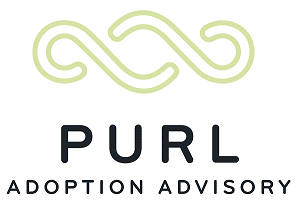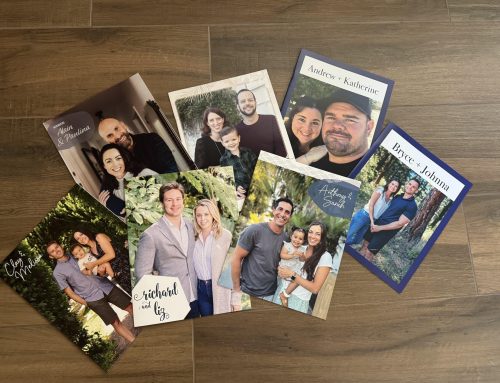
Two sweet Purl families are currently matched with expectant mothers, one due in the next days and one due in a few months. It is such an exciting time, but they now must endure the difficult wait that comes with adoption. It brings back lots of memories for me personally of our journey to become parents. I can clearly remember telling one of my friends that my husband and I were going to stop the fertility treatments and begin the adoption process, and her response: “Well, at least you aren’t going to have to go through labor to have your baby”. At the time, I didn’t think much of the comment, and probably even nodded in agreement. Little did I know, my version of “labor” was going to last over 72 hours, and the first time I experienced that labor, I would be leaving a hospital without a baby.
If you are not very familiar with adoption, you may not know that most expectant parents considering an adoption plan cannot actually consent to an adoption until some period of time after the birth of the child, even if they have been planning the adoption since finding out they were pregnant. In Arizona, that time period is 72 hours from the birth of the baby. That time, and all the emotions that undoubtedly go with it, is agonizing labor for an adoptive parent.
In our first adoption experience, we had been matched with an expectant mother for two months. We had gone to doctor’s appointments with her, seen the baby on an ultrasound, my husband and I each held a her leg during her delivery, my husband cut the baby’s umbilical cord, we bonded with the baby in our own room in the tiny hospital, but ultimately we left three days later without a baby. Looking back, they were the worst three days of my life. There were a lot of highs, but many, many more lows.
Our next adoption experience was a few months later and was very different than the first. I met my daughter’s birth mother by myself for the first time a few minutes after she received her epidural. This time, I alone held this virtual stranger’s hand and legs during delivery, I cut the cord, since she didn’t feel comfortable with a man she had never met being in the delivery room. For two and a half days, my husband and I sat in uncomfortable chairs in a tiny hospital nursery, as they told us there were no extra rooms for us to use to bond with this baby. We moved from chair to chair in the small room, always seeming to be in the way of the nurses buzzing about and the new mothers who came into the nursery to nurse their babies. After only about 30 hours in the hospital, our daughter’s birth mother was discharged. A day later, our daughter was discharged too, but we still couldn’t take her home. Instead she had to go to a respite foster care family’s home while we waited for those 72 hours to be over. That entire time we watched the minutes and hours pass by slowly. I think we had a lot less anxiety than we did the first time around, likely due to this sweet birth mother and how certain she seemed about her adoption plan. But those days were a blur, in part due to the lack of sleep, but also because of overwhelming fear. Fear that this child that we had been holding, feeding, burping, changing and loving, would not get to go home with us at all. But once those hours passed, we received a text telling us that Cora’s birth mother had made the incredibly brave and difficult decision to place her child for adoption, and Cora was ours forever. It was the happiest moment of our lives, but also bittersweet as we could only imagine what pain Cora’s birthmother was experiencing at the same time.
Eight months later, I got the opportunity to experience physical labor with my (surprise) biological daughter. I was in labor for about 24 hours when the doctors decided that I would have to have a C-section due to my daughter’s elevated heart rate and the infection we were both fighting. It had been a very rough pregnancy and delivery, but in the end I got to hold my second baby girl in my arms. This time, I wasn’t filled with the same fear I had after Cora’s birth, but I did feel the same exhaustion.
Having experienced two very different labors, I can honestly say that the labor I experienced with adoption was MORE difficult. If you know someone going through the adoption process, try and support them through what will undoubtedly be a very difficult and emotional time of their lives, even if they aren’t necessarily feeling the same physical pain as they would through childbirth. Make sure you bring them the same meals and offer other support like you would for any other mom. Their labor isn’t the same, but it is definitely just as agonizing.
If you or someone you know is considering beginning the adoption process and would like someone to walk beside them through this journey, please contact Purl Adoption Advisory. You can learn more about what an adoption advisor does in this journey, by clicking here.

Two sweet Purl families are currently matched with expectant mothers, one due in the next days and one due in a few months. It is such an exciting time, but they now must endure the difficult wait that comes with adoption. It brings back lots of memories for me personally of our journey to become parents. I can clearly remember telling one of my friends that my husband and I were going to stop the fertility treatments and begin the adoption process, and her response: “Well, at least you aren’t going to have to go through labor to have your baby”. At the time, I didn’t think much of the comment, and probably even nodded in agreement. Little did I know, my version of “labor” was going to last over 72 hours, and the first time I experienced that labor, I would be leaving a hospital without a baby.
If you are not very familiar with adoption, you may not know that most expectant parents considering an adoption plan cannot actually consent to an adoption until some period of time after the birth of the child, even if they have been planning the adoption since finding out they were pregnant. In Arizona, that time period is 72 hours from the birth of the baby. That time, and all the emotions that undoubtedly go with it, is agonizing labor for an adoptive parent.
In our first adoption experience, we had been matched with an expectant mother for two months. We had gone to doctor’s appointments with her, seen the baby on an ultrasound, my husband and I each held a her leg during her delivery, my husband cut the baby’s umbilical cord, we bonded with the baby in our own room in the tiny hospital, but ultimately we left three days later without a baby. Looking back, they were the worst three days of my life. There were a lot of highs, but many, many more lows.
Our next adoption experience was a few months later and was very different than the first. I met my daughter’s birth mother by myself for the first time a few minutes after she received her epidural. This time, I alone held this virtual stranger’s hand and legs during delivery, I cut the cord, since she didn’t feel comfortable with a man she had never met being in the delivery room. For two and a half days, my husband and I sat in uncomfortable chairs in a tiny hospital nursery, as they told us there were no extra rooms for us to use to bond with this baby. We moved from chair to chair in the small room, always seeming to be in the way of the nurses buzzing about and the new mothers who came into the nursery to nurse their babies. After only about 30 hours in the hospital, our daughter’s birth mother was discharged. A day later, our daughter was discharged too, but we still couldn’t take her home. Instead she had to go to a respite foster care family’s home while we waited for those 72 hours to be over. That entire time we watched the minutes and hours pass by slowly. I think we had a lot less anxiety than we did the first time around, likely due to this sweet birth mother and how certain she seemed about her adoption plan. But those days were a blur, in part due to the lack of sleep, but also because of overwhelming fear. Fear that this child that we had been holding, feeding, burping, changing and loving, would not get to go home with us at all. But once those hours passed, we received a text telling us that Cora’s birth mother had made the incredibly brave and difficult decision to place her child for adoption, and Cora was ours forever. It was the happiest moment of our lives, but also bittersweet as we could only imagine what pain Cora’s birthmother was experiencing at the same time.
Eight months later, I got the opportunity to experience physical labor with my (surprise) biological daughter. I was in labor for about 24 hours when the doctors decided that I would have to have a C-section due to my daughter’s elevated heart rate and the infection we were both fighting. It had been a very rough pregnancy and delivery, but in the end I got to hold my second baby girl in my arms. This time, I wasn’t filled with the same fear I had after Cora’s birth, but I did feel the same exhaustion.
Having experienced two very different labors, I can honestly say that the labor I experienced with adoption was MORE difficult. If you know someone going through the adoption process, try and support them through what will undoubtedly be a very difficult and emotional time of their lives, even if they aren’t necessarily feeling the same physical pain as they would through childbirth. Make sure you bring them the same meals and offer other support like you would for any other mom. Their labor isn’t the same, but it is definitely just as agonizing.
If you or someone you know is considering beginning the adoption process and would like someone to walk beside them through this journey, please contact Purl Adoption Advisory. You can learn more about what an adoption advisor does in this journey, by clicking here.



